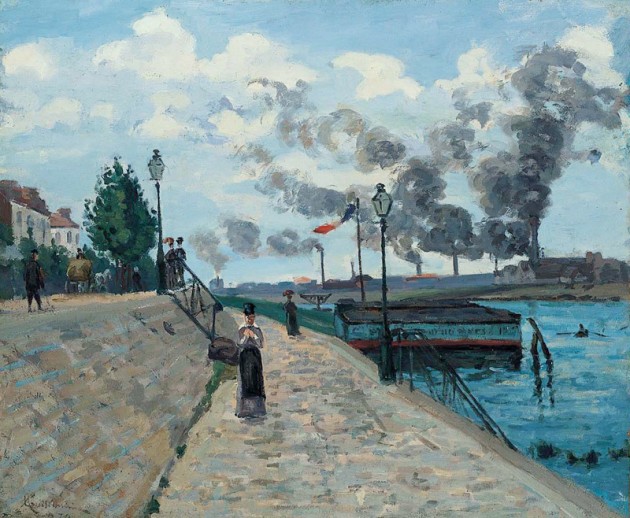A Revolution of the Palette: The First Synthetic Blues and their Impact on French Artists
The accidental discovery of Prussian blue in an alchemist’s laboratory around 1704 helped to open up new possibilities for artistic expression at the dawn of the Enlightenment. A Revolution of the Palette explores the use of this pigment, followed by the introduction of cobalt blue and synthetic ultramarine, by French artists from the Rococo period to the threshold of Impressionism.
A new palette available to artists, thanks largely to the addition of Prussian blue in the 18th century, helped fuel the heated philosophical debates regarding Newtonian color theory. The fascinating new capabilities of artists to exploit sophisticated color relationships based on scientific optical principles became a core precept of Rococo painting, or peinture moderne as it was called at the time. Exquisite examples of the early use of Prussian blue by Fragonard and his immediate circle demonstrate their technical achievements. Paintings by Vigée-Lebrun, Prud’hon and Ingres show the masterful use of Prussian blue as Neoclassicism took hold. The sophisticated, subtle manipulations of color in academic painting of the period, exemplified by Ducis’ Sappho Recalled to Life by the Charm of Music and Degas’ early and ambitious emulation of a Poussin composition, The Rape of the Sabines, rely heavily on the ability of the new blues to deftly modulate tone and hue in ways never available to earlier painters.
As revolutionary as this new blue color proved to be, Prussian blue was a mere precursor to the explosion of available colors brought about by the Industrial Revolution. Indeed, the French government played an active role in catalyzing innovation at the dawn of the 19th century, as the country emerged from the Revolution with its economy in disarray. Chemist Louis Jacques Thénard’s development of the next synthetic blue, a vivid cobalt blue pigment, was inspired by the traditional cobalt oxide blue glazes seen on 18th-century Sèvres porcelain. An exquisite lidded vase on loan from the Huntington Library, Art Collections, and Botanical Gardens illustrates this.
The third synthetic blue to emerge was the culmination of centuries of searching for a cheap, plentiful, high-quality replacement for the most valuable of all pigments: natural ultramarine. This was a color derived from lapis lazuli, a rare, semiprecious gemstone mined almost exclusively in Afghanistan since the 6th century, and imported to Europe through Venice. It is famously known to have been more costly than gold during the Renaissance. Natural ultramarine provided a brilliant, royal blue hue, but only if coarsely ground and applied in a comparatively translucent glaze over a light-reflecting ground. Other blue colors, such as smalt, which was essentially composed of particles of colored glass, were available to help achieve the lovely hues of ultramarine, but the poor covering ability of the paint and the difficulty of its preparation and use were familiar limitations.
In 1824, the French government announced a competition among chemists to develop a true synthetic ultramarine. The prize was finally awarded in 1828 to Jean-Baptiste Guimet. Painters at last had an affordable, fully balanced palette of cool and warm colors spanning the full spectrum. This fact, combined with the innovation of ready-mixed tube oil colors, greatly facilitated the direct representation of nature. The ability of painters to capture a wide range of observed natural effects in the landscape en plein air are represented by the works of Corot, Guigou, Monticelli and Dupré. A Revolution of the Palette closes with two canvases representing the Impressionists’ full realization of the wide-open possibilities made possible by these new blues: Guillaumin’s The Seine at Charenton (formerly Daybreak), and Caillebotte’s Canoe on the Yerres River.

